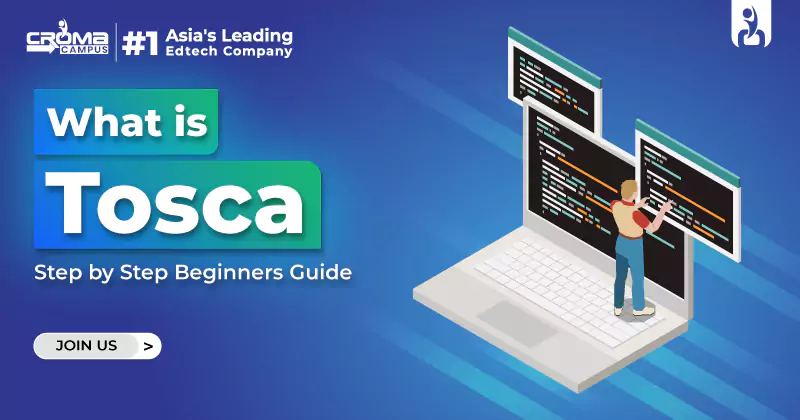Explore All About Dynamic Testing In Software Engineering
4.9 out of 5 based on 15649 votesLast updated on 4th Nov 2023 13.48K Views
- Bookmark

Dynamic testing in software engineering involves executing the program to find defects, ensuring it functions correctly.

This blog deeply covers dynamic testing, including its definition, importance, characteristics, types, techniques, advantages, and disadvantages. It concludes with valuable tips and a brief summary.
What is Dynamic Testing?
Need for Dynamic Testing
Characteristics of Dynamic Testing
Dynamic Testing Significance
Types of Dynamic Testing
Dynamic Testing Techniques
Advantages and Disadvantages of Dynamic Testing
Tips for Dynamic Testing
Conclusion and Summary
Video Tagline:
Explore all about Dynamic testing in software engineering with experts. Check out this video today and learn all about software testing.
What is Dynamic Testing?
Dynamic testing is a critical aspect of software testing where the actual behavior of a program is tested by providing different inputs. It ensures that the software functions correctly under various conditions and user interactions. Here's a brief overview of dynamic testing:
Key Aspects of Dynamic Testing in Software Testing:
It involves executing the software to observe its behavior.
Tests are conducted with real-world inputs to find errors and issues.
The goal is to validate the software's performance and functionality.
Example of Dynamic Testing in Software Engineering:
For instance, when testing a Login Page, if the system allows the username "cromacampus" but produces an error for "cromacampus@123," dynamic testing uncovers these variations in response. It ensures that the software behaves as intended under different input scenarios.
In essence, dynamic testing simulates real user interactions to validate the software's behavior, ensuring it functions correctly and reliably in diverse usage situations.
Need for Dynamic Testing
Validate software during and after installation.
Verifies efficient software behavior.
Requires runtime execution for testing.
Provides insights into dynamic code behavior.
Evaluate real-time software performance.
Assesses resilience under environmental stresses.
Characteristics of Dynamic Testing:
To grasp the fundamentals of software testing techniques, it's essential to understand the key attributes of dynamic testing:
Validation Stage: Dynamic testing is typically implemented during the validation stage of software testing.
Program Execution: It involves actively running the software program to assess its behavior and functionality.
Functional and Non-Functional: Both functional and non-functional pects of the software are evaluated through dynamic testing.
Bug Identification: Dynamic testing is effective in identifying bugs and issues within specific software.
Reliability Validation: It serves as a tool for validating the reliability of the software application.
Code Implementation: Unlike static testing, dynamic testing requires the implementation of the software's code to obtain expected outputs.
Direct Software Testing: Dynamic testing is conducted directly on the software application, distinguishing it from other testing methods.
Formal Approach: It offers a more formal and structured approach to testing activities, including test execution, coverage assessment, reporting, and test case identification.
Master efficient web testing with the Playwright Automation Course, designed to teach advanced techniques for cross-browser automation, handling dynamic content, and achieving seamless test execution for flawless web application performance.
Significance of Dynamic Testing
Detecting Varied Behaviors: Dynamic testing is essential because it helps identify how software behaves under different conditions and inputs. This process ensures that the software responds appropriately to diverse user interactions.
Unveiling Inconsistencies: It helps uncover inconsistencies within the software, such as discrepancies in data presentation. For instance, in an E-commerce application, a product price displayed as "$100.00" on one screen and "100 USD" on another can confuse users. Dynamic testing ensures consistency in such scenarios.
Identifying Hidden Issues: By actively using the software as an end user would, dynamic testing can reveal issues that may not be apparent through static testing methods. These issues may include runtime errors, performance bottlenecks, or unexpected crashes.
Enhancing User Satisfaction: Consistent and reliable software enhances user satisfaction. Dynamic testing helps deliver a software product that functions as intended, creating a positive user experience.
Maintaining Quality: Dynamic testing is integral to ensuring software quality. It verifies that software meets the specified requirements and performs well under real-world conditions.
Note: Selenium is a powerful open-source tool for automating web applications across different browsers. Enroll in a Selenium Online Course to master its features and enhance your testing skills efficiently.
Types of Dynamic Testing in Software Engineering
Dynamic testing is divided into two main categories, each serving a unique purpose:
White Box Testing: In white box testing, the automation tester knows the internal workings of the software, including its code and design. The primary goal here is to examine how the system performs based on its underlying code. This type of testing is typically carried out by developers or experts familiar with programming.
Black Box Testing: Black box testing is the opposite. Testers are not privy to the internal code or design. The main aim of black box testing is to verify the functionality of the system under test without any knowledge of the system's internal structure. Testers execute the complete test suite, and no programming knowledge is required.
Note: Tosca is a leading test automation tool for continuous testing. Earning a Tosca Certification validates expertise in scriptless automation, ensuring efficient software testing and quality assurance.
Black Box Testing Further Breaks Down into Two Types:
Functional Testing: This ensures that all the features of the software work according to the specifications. Testers provide input, check the output, and compare actual results with expected results. Various levels of functional testing include:
Unit Testing: Testing small, individual parts of the code, often done by developers.
Integration Testing: Combining testable individual units after unit testing, performed by developers or testers.
System Testing: Ensuring the system meets requirements, typically done by testers when the system is ready.
Acceptance Testing: Performed by end-users to verify business requirements are met, indicating readiness for deployment.
Non-Functional Testing: This type focuses on non-functional attributes of the system, such as memory, performance, and robustness. Various non-functional testing techniques include:
Performance Testing: Checking system response times under network load.
Recovery Testing: Verifying the system's ability to recover from crashes and hardware failures.
Compatibility Testing: Testing how the system behaves across different environments.
Security Testing: Ensuring the application's robustness and access control.
Usability Testing: Assessing user comfort and satisfaction with the system.
In essence, these dynamic testing categories help ensure software functions as expected, whether you're digging into the code's nitty-gritty (white box) or testing it without knowing its internals (black box).
Related Topics:
Manual Testing
Software Testing Interview Questions
Types of Software Testing
Black Box Testing in Software Engineering
The International Software Testing Qualifications Board (ISTQB) offers globally recognized certifications, providing foundational to advanced-level knowledge and skills in software testing, and fostering professional growth.
Dynamic Testing Techniques
In the Software Testing Life Cycle (STLC), dynamic testing techniques involve a series of tasks that are interlinked, relying on the completion of each preceding task. Here's a breakdown of the dynamic testing process, starting from test case design:
1. Test Strategy: Before delving into the process, it's essential to establish a test strategy. This strategy considers available resources, timeframes, testing objectives, scope, testing phases, the testing environment, and any potential challenges or risks. Once the strategy is defined and approved by management, the actual test case design begins.
2. Test Design and Implementation: In this phase, we identify the following elements:
Features to be tested
Derive the test conditions
Derive the coverage items
Derive the test cases
3. Test Environment Setup: Ensuring that the testing environment closely resembles the production environment is crucial. This phase involves installing the build and managing the test machines to create a consistent environment for testing.
4. Test Execution: During this phase, test cases are executed. The software is actively tested based on the test cases created earlier.
5. Bug Reporting: If the actual results during testing do not match the expected results, the test case is marked as "Fail," and a bug report is logged to document the issue.
In summary, dynamic testing techniques involve a sequence of steps, with each step building on the one before it. These steps ensure comprehensive testing of the software's features, identify issues and facilitate efficient bug reporting and resolution.
Note: Software Testing ensures software quality and reliability through systematic evaluation. Earning a Software Testing Certification validates expertise, boosting career prospects and equipping professionals with skills to detect bugs and ensure optimal performance.
Other Related Courses: Playwright Automation with Javascript Course Playwright with TypeScript Playwright with C#
Advantages & Disadvantages of Dynamic Testing
Advantages of Dynamic Testing
Dynamic Testing offers several advantages in the software development process:
Uncovering Complex Defects: Dynamic Testing is effective at identifying defects that may be too intricate or difficult to detect through static analysis. By actively running the software, it exposes hidden issues.
Comprehensive End-to-End Testing: This form of testing guarantees that the software operates smoothly throughout its entire lifecycle. Covering the entire journey significantly improves product quality and contributes to the overall success of the project.
Security Threat Detection: Dynamic Testing is a crucial tool for identifying and addressing security threats. By actively executing the software, it can reveal vulnerabilities that might be exploited by malicious actors.
Note: Croma Campus is one of the leading EdTech companies for providing API Testing Course. You can check the details about the course, fees, and duration.
Disadvantages of Dynamic Testing
However, dynamic testing comes with certain drawbacks:
Time-Consuming: Executing the software or code during dynamic testing can be time-consuming. It requires a significant amount of resources, which can slow down the testing process.
Increased Project Costs: Dynamic testing typically does not begin early in the software development lifecycle. As a result, issues discovered later in the process can lead to increased costs for fixing and addressing them.
You may also read:
Selenium Testing
Manual Testing Course
Software Testing Strategies in Software Engineering
Different Types of Software Testing
Data Flow Testing in Software Testing
Key Guidelines for Dynamic Testing
Clear and Comprehensive Test Cases: Define well-detailed test cases that encompass a wide array of inputs and usage scenarios. This approach guarantees thorough testing, facilitating the identification and resolution of any issues.
Automation: Utilize automated testing tools to execute test cases swiftly and efficiently. Automation streamlines issue identification and resolution.
Performance Testing: Assess the software's performance under various loads and conditions to ensure it can handle the expected usage and user volume.
Security Testing: Identify and evaluate potential security risks associated with the software. Verify that the system can withstand different types of security threats.
Defect Tracking: Implement a defect tracking system to monitor and manage any issues discovered during dynamic testing, ensuring they are promptly addressed.
Regular Testing: Perform dynamic testing at regular intervals throughout the software development process. This practice enables the timely detection and resolution of issues as they arise.
Test-Driven Development: Prior to actual development, design and implement test cases. This approach ensures that the software aligns with requirements and undergoes comprehensive testing from the outset.
Available Testing Courses in Delhi/NCR: Software Testing Course in Noida Manual Testing Course in Noida Selenium Training in Noida Karate API Course in Noida Software Testing Course in Delhi
Conclusion:
In conclusion, dynamic testing stands as a fundamental pillar in the realm of software testing, enabling the discovery of critical issues that might evade static testing. By actively running software and scrutinizing its behavior under diverse conditions, dynamic testing becomes a guarantor of reliability and performance. For those seeking to fortify their expertise in dynamic testing,
Croma Campus offers a comprehensive Jira Admin training program and Online Software Testing Course. Their curriculum encompasses a wide array of pivotal elements, encompassing test case design, automation, performance, and security testing.
This blog has spotlighted the importance of dynamic testing, elucidated its essential characteristics, and underscored its pivotal role in achieving top-tier software quality. Explore Croma Campus for an in-depth dive into dynamic testing and software testing certifications.
Summary:
Dynamic testing unearths critical software issues.
Croma Campus provides dynamic testing training and software testing certifications.
The training program encompasses test case design, automation, performance, and security testing.
Dynamic testing is the linchpin of software reliability and performance assessment.
Active execution of software is a cornerstone of dynamic testing.
Subscribe For Free Demo
Free Demo for Corporate & Online Trainings.

























.webp)

.png)















